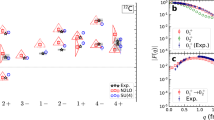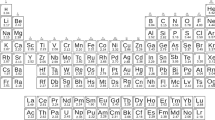Abstract
THE application of the Bohr theory to organic chemistry suggests a possible explanation of the hitherto unexplained isomerism of certain organic compounds. The electrons rotating in pairs around the four carbon valencies may possess either clockwise or anti-clockwise rotation with respect to the central carbon atom (Ramsay, Proc. Roy. Soc., xcii., A, p. 451, 1915–16). On the assumption that two of these pairs of electrons rotate in a clockwise and two in an anti-clockwise direction, it is possible to deduce that night isomerides of cinnamic acid may exist. It has long been known that four isomerides of cinnamic acid exist, whereas only two are possible on the ordinary structural formulæ.
This is a preview of subscription content, access via your institution
Access options
Subscribe to this journal
Receive 51 print issues and online access
$199.00 per year
only $3.90 per issue
Buy this article
- Purchase on Springer Link
- Instant access to full article PDF
Prices may be subject to local taxes which are calculated during checkout
Similar content being viewed by others
Author information
Authors and Affiliations
Rights and permissions
About this article
Cite this article
GARNER, W. An Electronic Theory of Isomerism. Nature 104, 661–662 (1920). https://doi.org/10.1038/104661b0
Issue Date:
DOI: https://doi.org/10.1038/104661b0
Comments
By submitting a comment you agree to abide by our Terms and Community Guidelines. If you find something abusive or that does not comply with our terms or guidelines please flag it as inappropriate.



